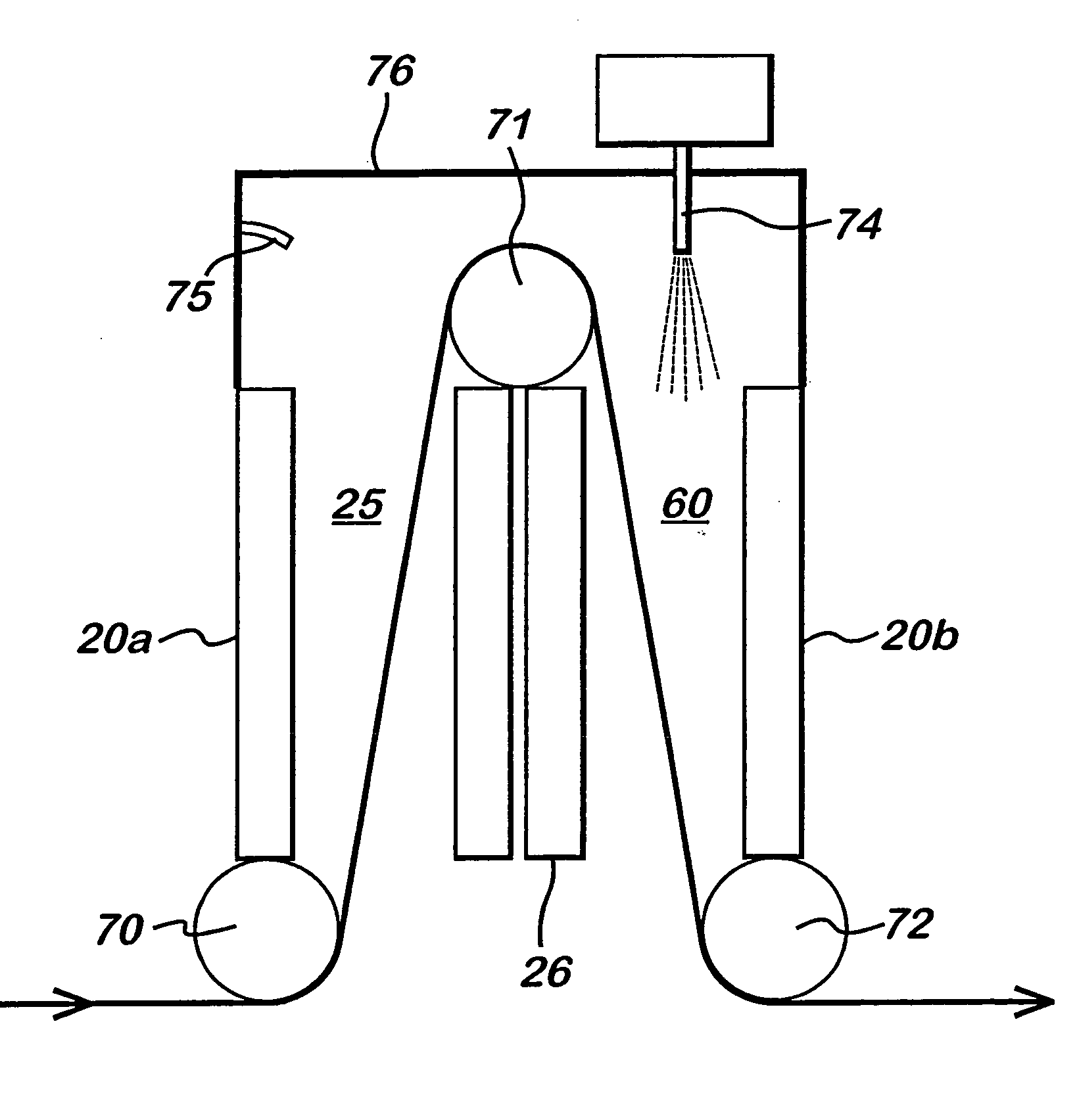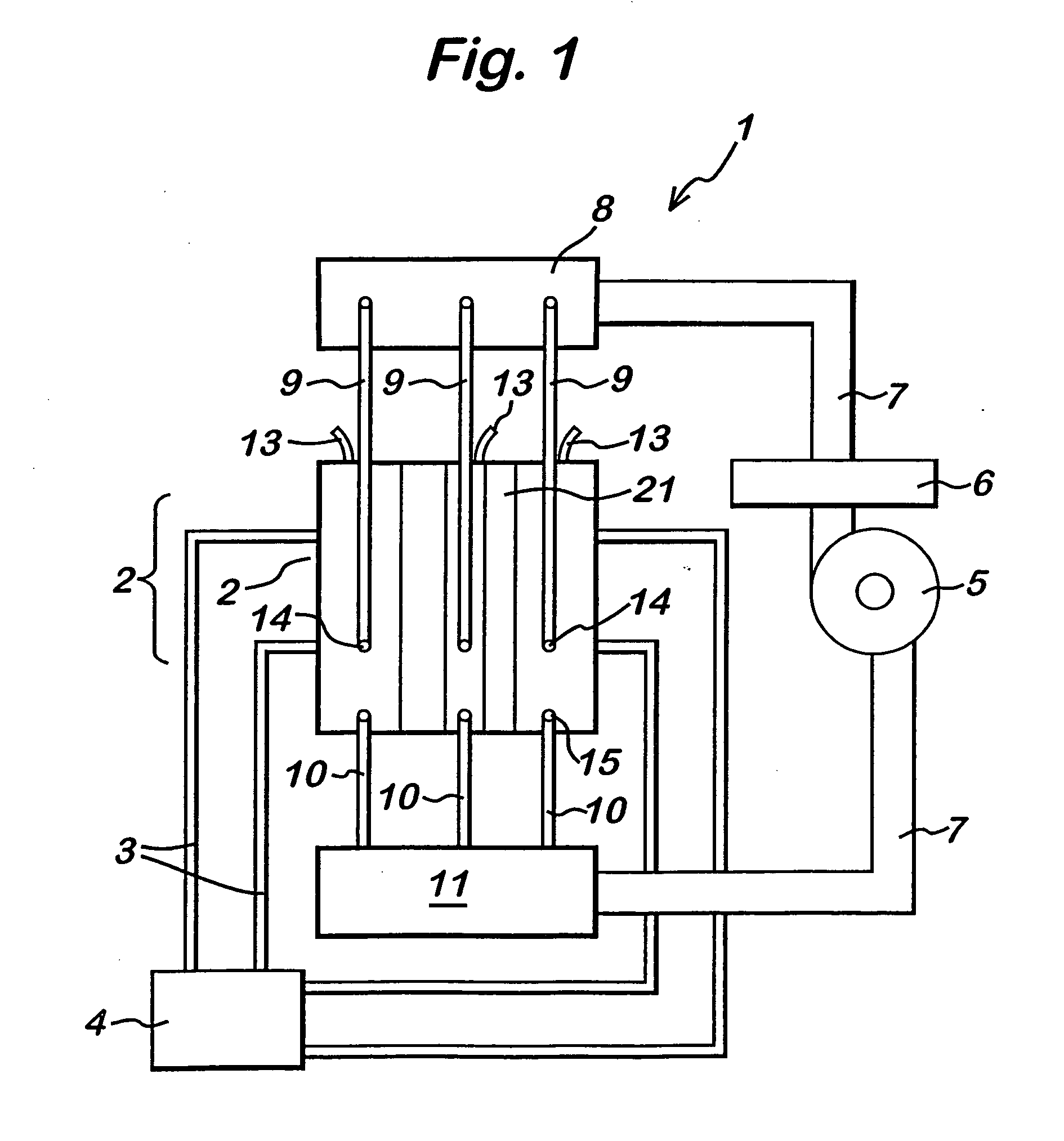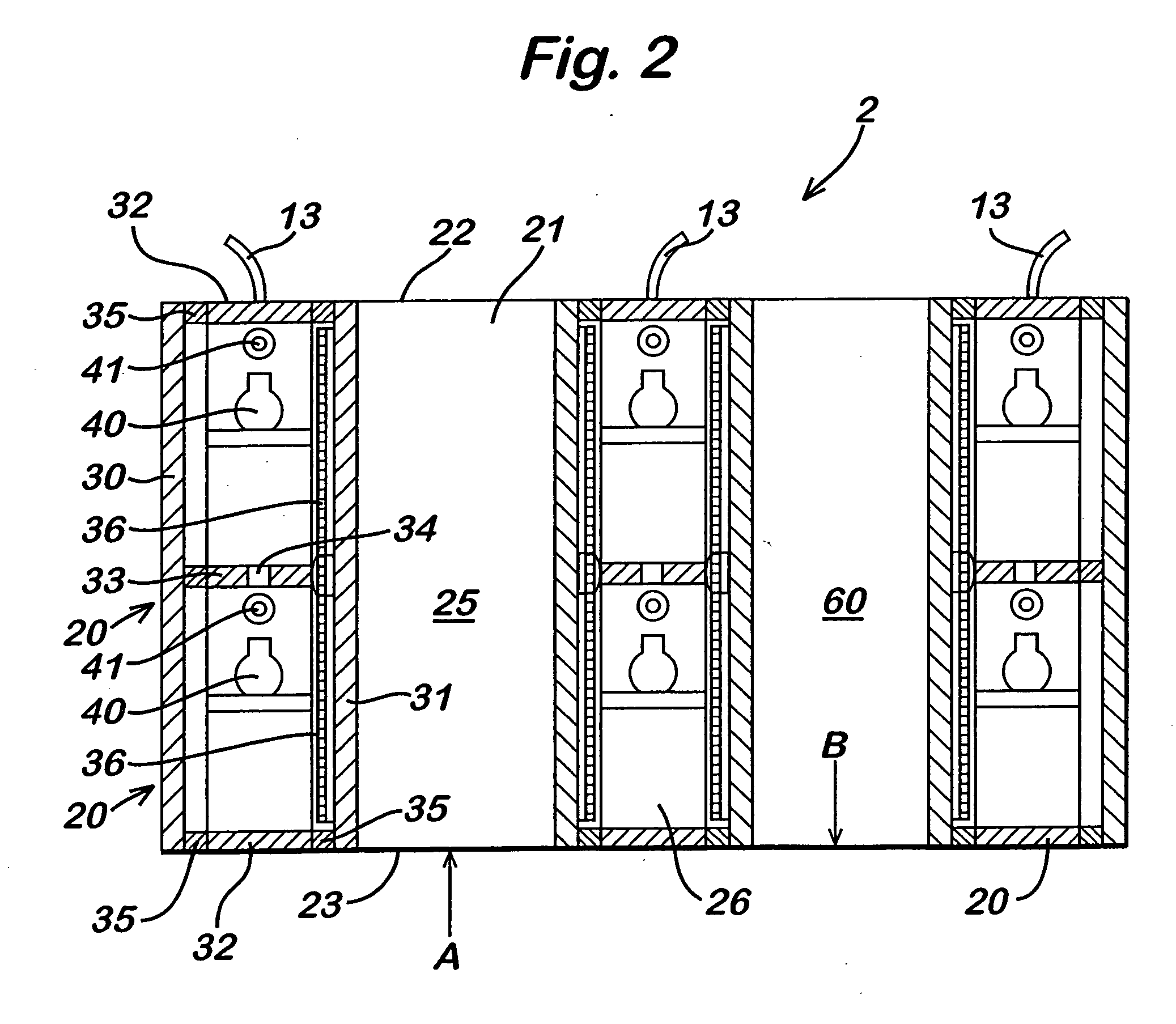Atmospheric pressure plasma assembly
a technology of atmospheric pressure and plasma, which is applied in the direction of prosthesis, liquid/gas/vapor textile treatment, and textile treatment by spraying/projecting. it can solve the problems of non-polar surface, poor disposition to coating or gluing, and inability to achieve processes which are impossible or difficul
- Summary
- Abstract
- Description
- Claims
- Application Information
AI Technical Summary
Benefits of technology
Problems solved by technology
Method used
Image
Examples
example
Multilayer Coating on Polypropylene Film
[0065] As an example of the potential utility of the present invention there is provided the following example in which a 25 μm thick polypropylene film was coated twice using the apparatus in accordance with the present invention. The first coating was a hydrophilic polyacrylic acid coating, the second coating being an oleophobic and hydrophobic fluoropolymer coating. A KSV CAM200 Optical Contact Angle Meter was used to characterise [0066] i) The untreated film which is hydrophobic but not oleophobic [0067] ii) the acrylic acid treated film (i) and [0068] iii) the fluoropolymer treated film (ii)
by sessile drop contact angle.
[0069] The untreated polypropylene film is hydrophobic but not oleophobic, as shown in Table 1. Note: The water contact angle indicates that this film is corona treated on receipt.
TABLE 1Contact Angle analysis of polypropylene film. (the term wets out isused to mean that no droplet formation is seen).Probe LiquidΘ (l...
PUM
| Property | Measurement | Unit |
|---|---|---|
| temperature | aaaaa | aaaaa |
| pressure | aaaaa | aaaaa |
| drop size | aaaaa | aaaaa |
Abstract
Description
Claims
Application Information
 Login to View More
Login to View More - R&D
- Intellectual Property
- Life Sciences
- Materials
- Tech Scout
- Unparalleled Data Quality
- Higher Quality Content
- 60% Fewer Hallucinations
Browse by: Latest US Patents, China's latest patents, Technical Efficacy Thesaurus, Application Domain, Technology Topic, Popular Technical Reports.
© 2025 PatSnap. All rights reserved.Legal|Privacy policy|Modern Slavery Act Transparency Statement|Sitemap|About US| Contact US: help@patsnap.com



